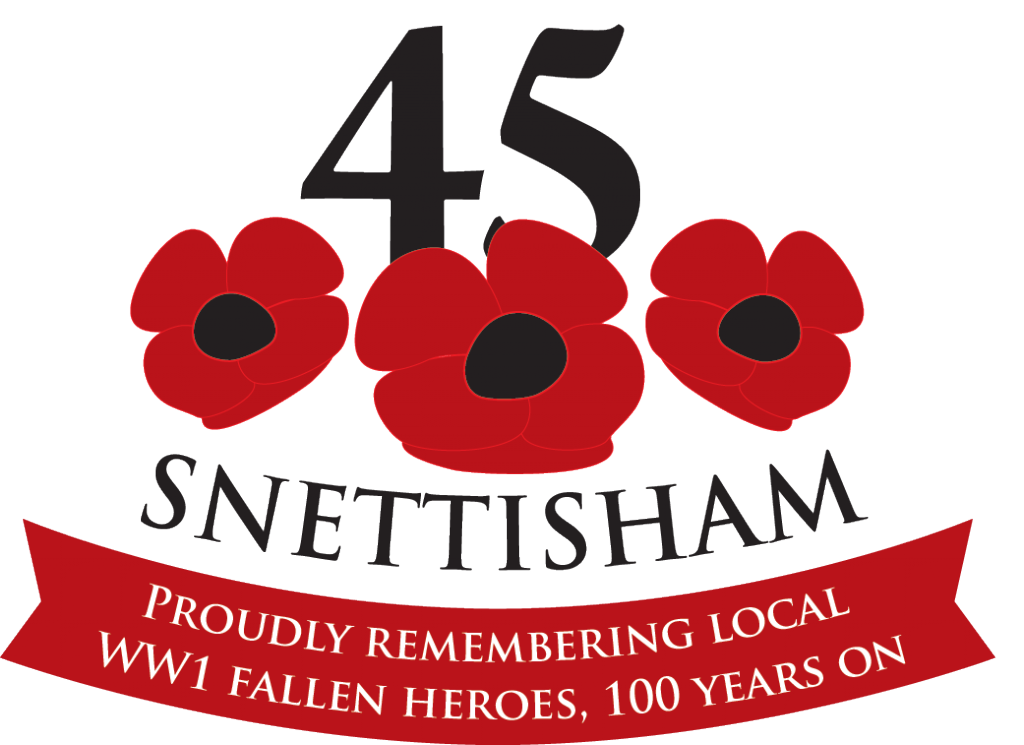James Sidney (Sidney James) Auker
The soldier:
Sidney James Auker enlisted into the army in Norwich, Norfolk. His enlistment papers recorded he was born in West Ham, Essex and his place of residence as being ‘Snettisham’.
Sidney James Auker enlisted prior the outbreak of war, most probably in c.1911/12 (as he turned 18). He elected to join the 12th Royal Lancers a famous Calvary regiment and was assigned regimental number 4682 (The 12th Royal Lancers Regimental Museum has confirmed this number tallies with a pre-war enlistment into their ranks).
The 12th Royal Lancers were stationed in Norwich for about 18 months at this time, at Nelson Barracks, this famous regiment having just returned to the UK from a decade away on active service in the Boer War, with many battle honours and major medals. There was much publicity around their return to Norwich and many events and parades in the area involving them, most probably seen by James Sidney.
Private Sidney James Auker received his cavalry/lancer training and was in the regiment’s ranks at the outbreak of WW1. Being a crack, battle-hardened regiment, the 12th Royal Lancers was immediately deployed at the vanguard of the British Expeditionary Force (BEF) with other similarly experienced regiments, arriving in France on the 17th August 1917. This was only 2 weeks after Britain declared war on Germany for invading France through Belgium.
Private Sidney James Auker was killed in action on Sunday the 23rd August 1914, aged just 20. This was just six day’s after the BEFs arrival in France and on the eve of the major battle of Mons – the first big engagement involving British and German forces.
At the time of his death both armies were mobile and probing each other’s lines and defences, leading to a series of escalating skirmishes. The 12th Royal Lancers regimental diary captures the ‘action’ in which James Sidney died;
‘The Squadron retired without incident till midday, when we arrived at a small village. I think it is called Macquignies or Hargnies (5 miles W of Maubeuge). Anyhow, there were some crossroads here and we held them. About 3 o’clock some infantry were reported about a mile to the N of the village. “C” Squadron took up a position in thick ground to receive them. They attacked us after a time, and things got rather hot, so hot indeed that “B” Squadron was sent for to reinforce. By the fire it seemed as if a whole battalion was after our blood. “B” Squadron arrived and was sent to the left. Lt Moore and seven men were sent dismounted to reconnoitre a small path and evidently ran into it, for they never returned. An awful din ensued and bullets flew from all sides. The Colonel, seeing that we were almost surrounded, gave the order to retire. This was done without the least excitement, the men going quietly to their horses and mounting. Some of them were even unwilling to go, wanting to look for those who were lost. The Colonel was firm however, and we walked our horses for a mile up the road. No sign was seen of the missing. In No 1 Troop, Mr Moore and his seven men were lost. They were L/Cpl Totman , Ptes, Allen , Allen Asher , Awker , Plant , & Williams . Others who were lost were Pte James , Collar and Johnson . Poor Mick Hunt was shot and died from his wounds.’
The first British soldier killed in WW1 is widely held to be John Parr, who died on the 21st August 1914. Tragically James Sidney Auker was killed only 2 days later before any major battles had commenced, giving him the sad distinction of being one of our country’s earliest fallen sons.
James Sidney Auker is buried in Grave 3 of the Assevent French National Cemetery, Nord, France.
His name is inscribed on both of Snettisham’s war memorials and also appears on its ‘Roll of Honour’.
The man:
James Sidney Auker (note not Sidney James) was born on the 31st October 1893 in West Ham, Essex. His parents were Thomas (bn. c. 1859, Snettisham, Norfolk) and Louisa Auker (bn. c. 1858). In the 1891 census, two years prior to his birth his parents were living in Southwark, London with Thomas’s younger sister, Ada (also born Snettisham).
James Sidney was baptised in St. Mary’s Chuch, Snettisham on the 28th January 1894, both Thomas and Louisa appearing on the record.
In the 1901 census, James Sidney, now 7, is shown living with his Grandparents, James and Ann Auker, aged 70 and 72 respectively, in Snettisham. His father Thomas, now 42 is also living with them, his occupation being recorded as ‘cab driver’. There is no record of his mother, Louisa at this point.
James Sidney Auker enrolled in Snettisham School on the 1st June 1901 (still Snettisham village’s existing primary school). He remained there for his entire schooling leaving on the 2nd August 1907 to go to work. This is the first time his given names are recorded reversed as ‘Sidney James’ Auker, an intermittent occurrence on documentation from now on. The responsible adult for James Sidney is recorded as James Auker (his Grandfather not his father).
In 1902, James Sidney’s father, Thomas, died in Snettisham, he was 44. Thomas was buried in St. Mary’s churchyard on the 5th August 1902.
Thomas’s mother, Louisa Auker is registered as re-marrying almost immediately back in Southwark (on the 29th June 1902) to a Harry William Leopard. Her status is shows as ‘widow’. This may explain her absence in the previous Snettisham census or on any local records,
By the 1911 census James Sidney Auker’s Grandparents, the people who had been raising him for several years, were living in Park Lane, Snettisham. James (his Grandfather) was now 80 and Ann (his grandmother) was 82. James Sidney’s uncle George (aged 50) was living with them, but James Sidney had moved out, shortly prior to joining the army.
There are no know siblings for James Sidney Auker and sadly there are no next of kin listed on either the CWWG’s records or army records for him.
With much thanks to Major Phil Watson (retired), 12th Royal Lancers Regimental Museum

